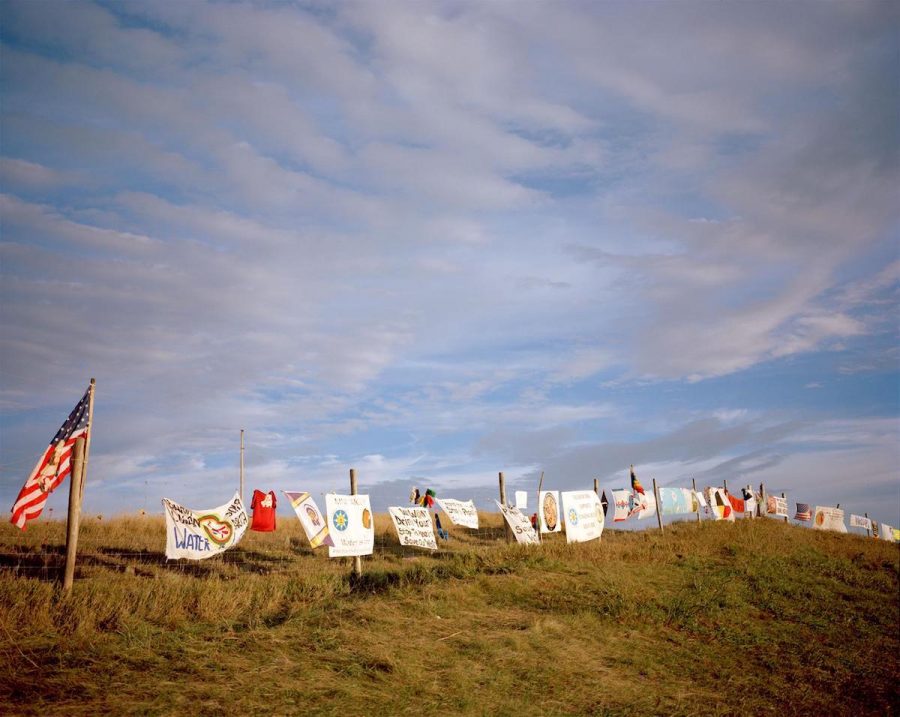Keystone Pipeline spills thousands of gallons of oil in South Dakota
Will Keystone XL supporters finally begin to fight for our environment?
Photo by SUBMITTED
TransCanada reports its infamous pipeline’s leakage has not yet contaminated water tables, but what does this mean for the future of Keystone XL?
True to environmentalist expectations, the infamous Keystone Pipeline has had its largest spill to date, leaking about 5,000 barrels — 210,000 gallons — of crude oil into the grasslands of South Dakota on Thursday.
In the past year, you’ve probably heard about the debate centered around the Keystone Pipeline and its proposed extension, Keystone XL. Most notably, the Standing Rock Reservation protests left a lasting impact on the opposition of the pipeline’s construction. The protests centered around concerns about contaminating the reservation’s drinking water supply and the other environmental impacts Keystone XL might precipitate.
According to The Washington Post, the company that owns and operates the Keystone Pipeline, TransCanada, reported there has been no water contamination at this time, because the spill occurred in a relatively isolated area.
But will this always be the case?
The Keystone Pipeline stretches across 1,136 miles of land. It has leaked twice before, once in 2011 and again in 2016. Both of these previous spills were contained to 400 barrels of oil — significantly smaller than Thursday’s incident. So if these spills have occurred multiple times, and have only gotten worse, doesn’t that imply a new addition to the Pipeline will only cause more trouble?
The spill occurred about 30 miles away from the Sisseton Wahpeton Oyate’s Lake Traverse Indian Reservation, a region covered in wetlands, according to National Geographic. Had the spill occurred in a different location or on a different section of the pipeline, oil could’ve seeped into the reservation. Pipeline officials informed the reservation about the spill early in the day, but community members are still worried.
“There are a lot of lakes and streams and underground aquifers that are near our reservation and on our reservation, but I don’t know exactly where it spilled,” Dave Flute, chairman for the Sisseton Wahpeton Oyate people, told National Geographic. “I don’t know if it’s on cropland or range or pasture lands, but I know that we have a lot of good fertile soil here, and the level of concern is high with the tribe and the tribal council.”
I’d expect TransCanada and its supporters, including our president, to learn from the error of its ways.
According to The Washington Post, critics of the new pipeline are using the latest Keystone spill as ammunition against Keystone XL, arguing that TransCanada “cannot be trusted.”
“This disastrous spill from the first Keystone Pipeline makes clear why Keystone XL should never be built,” Jared Margolis, senior attorney of the Center for Biological Diversity, told the Post. “Trump’s issuance of a permit for Keystone XL is a farce that will only lead to more pollution for people and wildlife.”
Keystone XL supporters argue the pipeline will have substantial economic benefits for the United States, but are these benefits really worth the potential future oil spills, toxic frack waste and contaminating chemicals being released into our environment?
Apparently so.
According to the Nebraska PSC’s Final Order report regarding the approval or disapproval of the Keystone XL proposal, the construction of the pipeline is indeed “in the public interest.” The project was officially approved on Monday.
The United States has been walking a fine line with its regard for environmental preservation nowadays. It’s sad to see that the Keystone XL proposal could not serve as the first in a long series of environmentally-conscious decisions made by our nation. I only hope that the path the United States is heading down can someday be altered toward something more promising for the future of our environment.

Madeline Fuerstenberg is a fourth-year journalism student. This is her eighth semester on The Spectator staff and she’ll miss it with all her heart once she graduates (if she graduates).

